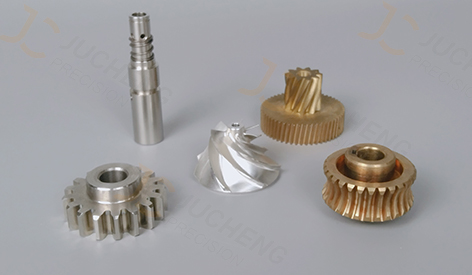ㆍPrivacy: We respect your privacy. Here you can find an example of a non-disclosure agreement. By submitting this form, you agree to our terms & conditions and privacy policy.
Views: 4 Author: Site Editor Publish Time: 2023-11-22 Origin: Site








Achieving a machining accuracy of 0.01 for precision equipment parts requires careful attention to various factors throughout the CNC machining process. Here are some precautions to ensure high precision:

Machine Calibration and Maintenance:
Regularly calibrate and maintain CNC machines to ensure accuracy. Any wear or misalignment can impact precision.
Tool Selection:
Use high-quality cutting tools and ensure they are sharp. Dull tools can lead to inaccuracies and poor surface finishes.
Material Selection:
Choose materials with consistent properties. Variations in material hardness or density can affect machining accuracy.
Fixture Rigidity:
Ensure the workpiece is securely and rigidly held in the fixture. Vibrations or movement during machining can result in inaccuracies.
Toolpath Optimization:
Optimize toolpaths to minimize tool changes and reduce unnecessary movements. Efficient toolpaths contribute to better accuracy.
Coolant Usage:
Properly apply coolant to control temperature and reduce heat-induced expansion, which can affect dimensions.
Cutting Speeds and Feeds:
Optimize cutting speeds and feeds for the specific material being machined. Incorrect speeds and feeds can lead to tool wear and reduced accuracy.
Tool Runout:
Minimize tool runout, which is the deviation from a true rotation. Excessive runout can cause dimensional inaccuracies.
Measurement and Inspection:
Regularly inspect machined parts using precision measurement tools such as micrometers and calipers. Implement in-process and final inspections.
CAD/CAM Accuracy:
Ensure the accuracy of the CAD model and CAM programming. Any discrepancies here will be reflected in the machined part.
Temperature Control:
Maintain a stable machining environment by controlling temperature. Fluctuations in temperature can affect material dimensions.
Tolerances and Documentation:
Clearly define and communicate tolerances in the engineering drawings. Accurate documentation is crucial for achieving precision.
Feedback and Iterative Improvement:
Implement a feedback loop for continuous improvement. Analyze any discrepancies, make adjustments, and strive for iterative improvements in the machining process.
By addressing these factors and maintaining a systematic approach to precision machining, you can enhance the likelihood of achieving a machining accuracy of 0.01 for precision equipment parts.

